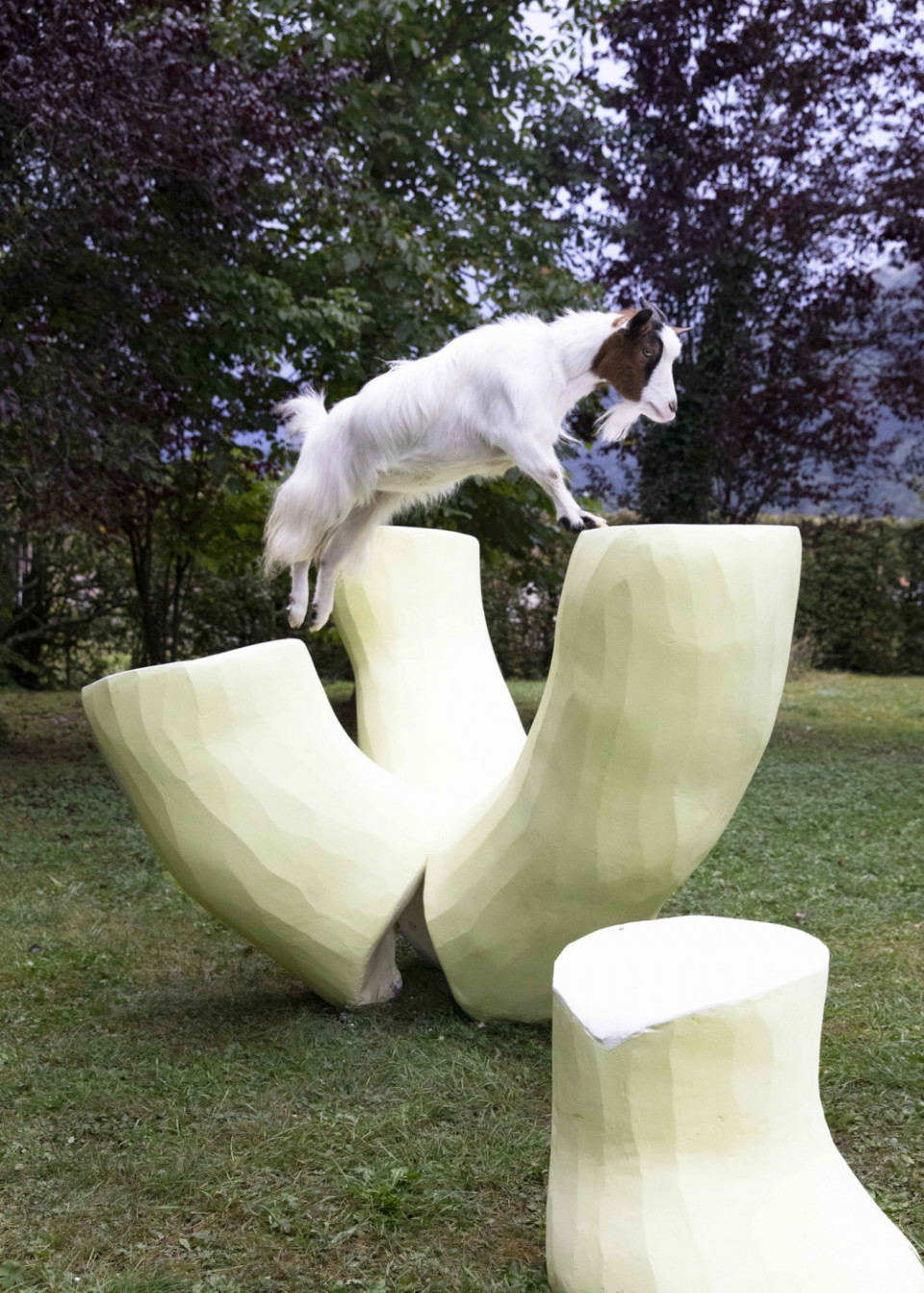Léa Bouttier
Main, seul, feu, dune
Outside {Ecole d'art de Belfort}
“Reality is a very subjective affair […]. You can get nearer and nearer, so to speak, to reality; but you never get near enough because reality is an infinite succession of steps, levels of perception, false bottoms, and hence unquenchable, unattainable. 1”
For Léa Bouttier, sculpture is in turn a set, an actress or a scenario that guides her work. It is a tool for understanding and reading the world. It can become a seat, a crutch or a prosthesis, an extension of our bodies and senses. Thus, the sculptural medium is omnipresent in her work, even when she invests the fields of video, installation or writing.
“I explore the way in which humans relate to forms and understand them. Silent forms are subject to interpretation and over-interpretation; we project onto them. 2”.
Léa Bouttier’s exploration of shapes and materials in space explores the ways in which our subjective realities are composed. The ambiguity of her objects is conducive to projection: by blending design and bodily forms 3, they encourage visitors to come and complete missing spaces. They encourage visitors to fill in missing spaces or to take action.
“In my work, sculptures are sometimes characters, [but] they never have a voice. The words and feelings attributed to them are a human translation. Also, some sculptures develop exaggerated narratives that poke fun at the artist’s role in creation, and at the interaction between the observer and the forms. […] The use they propose may be multiple; they have no instructions for use 4”.
In his vocabulaire technique et critique de la philosophie5 , André Lalande defines perception as “the act whereby an individual, immediately organizing his present sensations, interprets and completes them with images and memories, discarding as far as possible their affective or memory character”. André Lalande defines the term perception as “the act by which an individual, immediately organizing his present sensations, interpreting and completing them with images and memories, discarding as far as possible their affective or motor character, opposes an object which he spontaneously judges to be distinct from him, real and currently known to him”. Léa Bouttier first envisaged the exhibition Main, seul, feu, dune in connection with her close reading of Frances A. Yates’ L’art de la mémoire. Yates. The 1975 work deals with the history of memorization systems and techniques at the crossroads of religion, morality, philosophy and art. It also reveals that the art of memory is intimately linked to that of imagination, and that their alliance, as mentioned by Lalande, leads to the construction of our perception.
“The status of my sculptures, like their material, is fluid, rarely revealing their true nature. They question the reliability of our perceptions 6.”
For Léa Bouttier, the act of perception is inseparable from the act of creation. It is this association that guides her artistic processes, as well as her approach to the public’s presence in her works and exhibitions. This is how Main, seul, feu, dune was conceived as both “an entry into someone else’s thought 7” and an open device within which each person traces “his or her own path in the forest of things, acts and signs that face or surround them8” according to principles of analogy, mechanisms of projection and sometimes also empathic reflexes in the face of objects with a carnal or anthropomorphic aspect that mark out the route. Like the words of the exhibition’s title, the works are both autonomous islands and fragments of a narrative that we instinctively complete, eyes half-closed, senses alert, groping our way through, like those stories that emerge at night and which we doubt whether we’ve seen, lived or dreamed9.
Léa Bouttier took part in the residency Artistes plasticiens au Lycée initiated by the Region and the DRAC Bourgogne-Franche-Comté with students in the seconde option arts plastiques at the Lycée Cuvier in Montbéliard and students in the terminale option Humanités, Littérature Philosophie at the Lycée Armand Peugeot in Valentigney.
____
- Vladimir Nabokov, Intransigences, editions Julliard, 1986. ↺
- Léa Bouttier, note of intent for the residency Artistes Plasticiens au Lycée ↺
- Pieces of furniture, movable or manipulable like games, made from materials characterized by a certain sensuality or even more simply evoking anthropomorphic forms ↺
- Léa Bouttier, Op. Cit. ↺
- Collection : Dictionnaires Quadrige, Presses Universitaires de France (PUF), 2010 ↺
- Léa Bouttier, Op. Cit. ↺
- Interview with the artist, October 2024 ↺
- Jacques Rancière, Le spectateur émancipé, La Fabrique Editions, 2008 ↺
- Reference to the artist’s edition Les Nuits de Jeannette, which greets the public at the exhibition entrance ↺
Infos utiles
Find out more about Léa Bouttier.
Download the press release.




